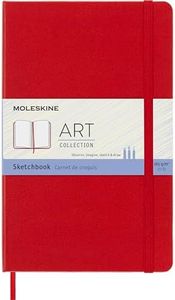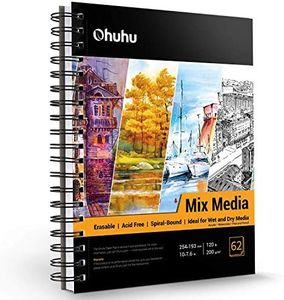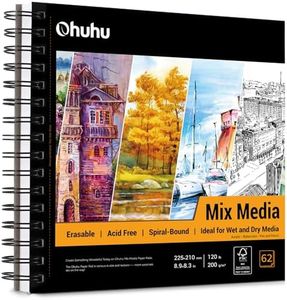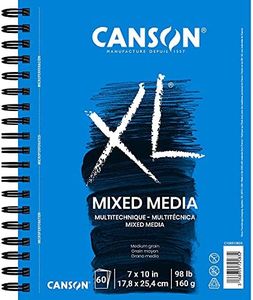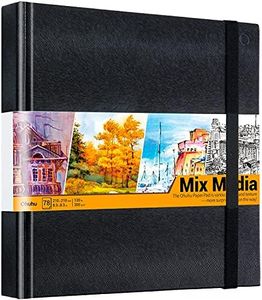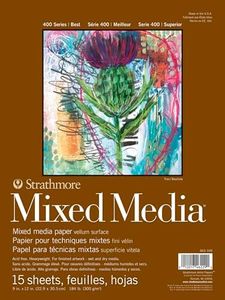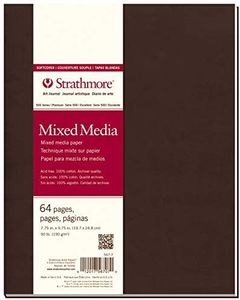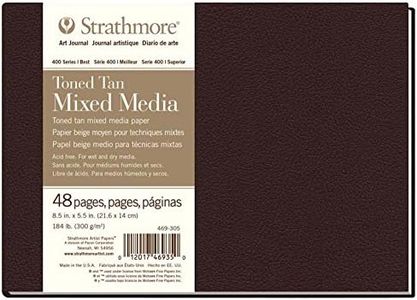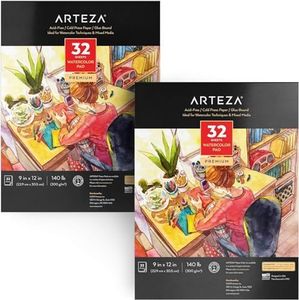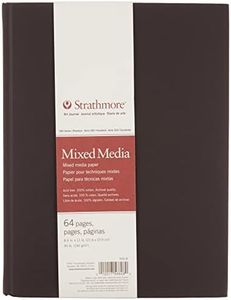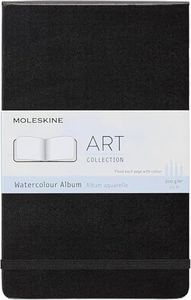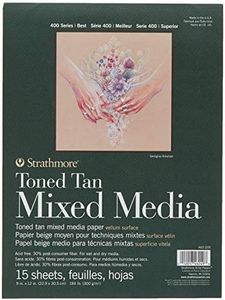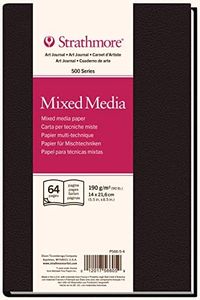We Use CookiesWe use cookies to enhance the security, performance,
functionality and for analytical and promotional activities. By continuing to browse this site you
are agreeing to our privacy policy
10 Best Mixed Media Sketchbooks
From leading brands and best sellers available on the web.Buying Guide for the Best Mixed Media Sketchbooks
Choosing the right mixed-media sketchbook is important because it supports a wide range of artistic techniques and materials. Unlike regular sketchbooks that are optimized for one medium (such as pencil or watercolor), mixed-media sketchbooks are designed to handle everything from inks and paints to markers, colored pencils, and even collage. The key is to find a sketchbook that can cope with the techniques you enjoy without warping, bleeding, or buckling. Your choice should be guided by the types of art you like to make most and how portable or durable you want your sketchbook to be.Paper Weight (gsm/lb)Paper weight refers to how thick and sturdy each sheet of paper is, usually measured in grams per square meter (gsm) or pounds (lb). Heavier paper can better handle wet media like watercolor, acrylics, and ink, which might otherwise soak through or wrinkle thinner sheets. Paper weights for mixed-media sketchbooks typically range from about 100 gsm (lightweight, good for dry media and light washes) to 250 gsm or higher (heavyweight, suitable for lots of wet or layered work). If you mainly use pencils and markers, a lower weight will do, but if you use a lot of paint or water, invest in a heavier paper.
Paper Texture (Tooth)Paper texture, often called 'tooth,' describes how smooth or rough the paper feels. A rougher texture grips dry media like pencils and pastels better, creating textured marks, while a smoother paper is great for pen, ink, and markers, providing crisp lines. Mixed-media sketchbooks usually aim for a middle ground—a slight tooth that makes them versatile for most media. If you love blending pencils or adding lots of detail, look for smoother paper; if you enjoy textured effects, go with more tooth.
Binding TypeBinding affects how flat the sketchbook lies and how easy it is to tear out or flip pages. Common options include spiral (easy to lay flat and remove sheets), stitched (more durable, holds up over time, but harder to remove pages), and glue-bound or pad (easy tear-out but may not be as sturdy for mixed-media work). Artists who like creating spreads or filling every inch of a page often prefer stitched or hardbound books, while those who want to share or frame work might favor spiral or glue-bound for the easy removal.
Paper ColorPaper color can be bright white, natural/off-white, or even toned (like gray or tan). White paper makes colors pop and is traditional for most artwork. Off-white or natural papers are easier on the eyes and can make sketches look softer. Toned papers are great if you like to add highlights and shadows or work in monochrome. Think about your artistic style: if you want pure, vibrant colors, go with white; for atmosphere and a forgiving background, try off-white or toned.
Size and FormatSize varies from tiny pocket sketchbooks to large canvases. Bigger books give plenty of space for expressive work, while small books are portable and great for on-the-go sketches. The format—portrait, landscape, or square—impacts how your compositions flow. If you work mainly at home and like to make big, detailed pieces, consider a larger format; for quick sketches or travel, smaller formats are best. Choose the size that matches how and where you create most often.
